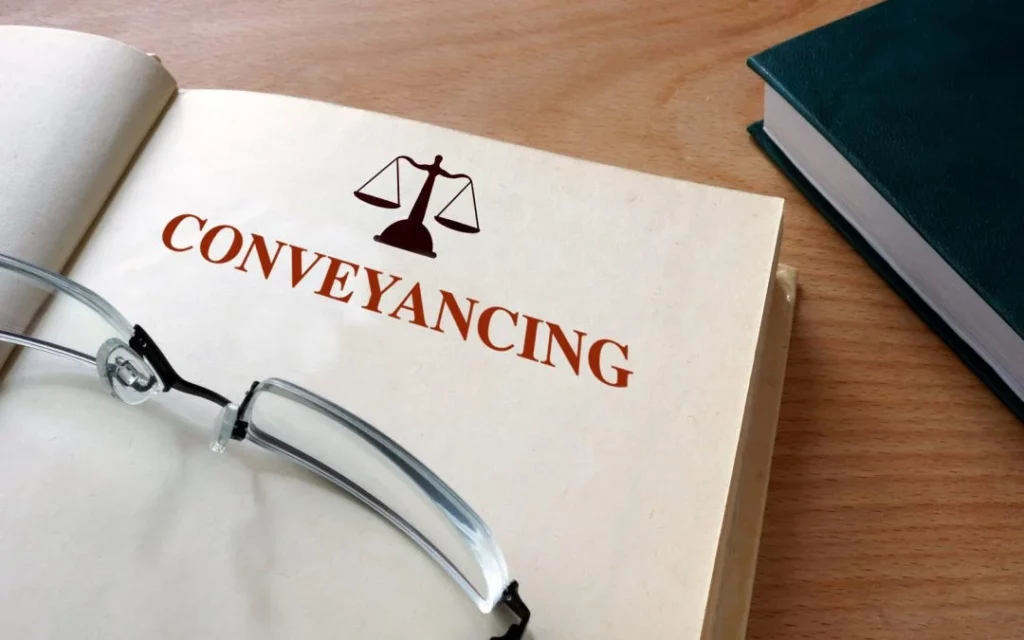The conveyancing process is an essential part of any property transaction in Melbourne. Whether you are buying or selling a property, understanding the conveyancing process can help you navigate through the legal requirements and ensure a smooth transaction. In this article, we will explore the basics of conveyancing, the role of a conveyancer, the stages of the conveyancing process, the legal aspects involved, and the costs associated with conveyancing.
The Basics of Conveyancing
Conveyancing is the legal process of transferring the ownership of a property from one party to another. It involves various steps and legal requirements to ensure that the transaction is valid and legally binding. Understanding these basics is crucial for both buyers and sellers.
When delving into the world of conveyancing, it is important to recognize the intricate dance of legalities and paperwork that underpins the process. From the initial stages of drafting contracts to the final steps of registration, every detail is meticulously scrutinized to safeguard the interests of all parties involved.
Definition of Conveyancing
Conveyancing is a legal term that refers to the transfer of ownership of a property from the seller to the buyer. It involves the preparation, execution, and registration of legal documents to ensure a legally binding transaction.
At its core, conveyancing encapsulates the essence of property law, intertwining elements of contract law, land law, and regulatory compliance. The meticulous attention to detail in drafting contracts and conducting searches is aimed at fortifying the legal foundation on which the property transaction stands.
Importance of Conveyancing in Property Transactions
Conveyancing plays a crucial role in property transactions by protecting the rights and interests of both buyers and sellers. It ensures that all legal requirements are met and helps to prevent any potential disputes or complications in the future.
Moreover, the significance of conveyancing extends beyond the mere transfer of property ownership; it serves as a shield against unforeseen legal pitfalls. By navigating through the complexities of property law and adhering to established procedures, conveyancing acts as a safeguard, offering a sense of security and assurance to all parties involved in the transaction.
The Role of a Conveyancer in Melbourne
A conveyancer is a licensed professional who specializes in property law and handles the conveyancing process on behalf of the buyer or seller. Their role is vital in ensuring a smooth and legally compliant transaction.
Conveyancers play a crucial role in the real estate industry, acting as intermediaries between buyers and sellers to facilitate the transfer of property ownership. They possess a deep understanding of property law and are well-versed in the intricacies of the conveyancing process.
Duties and Responsibilities of a Conveyancer
A conveyancer has various duties and responsibilities throughout the conveyancing process. They conduct property searches, prepare legal documents, liaise with the other party’s conveyancer, handle the exchange of contracts, and oversee the settlement process.
Additionally, conveyancers ensure that all legal requirements are met, including verifying the legitimacy of property titles, checking for any outstanding debts or restrictions on the property, and ensuring that all necessary paperwork is completed accurately and on time.
Choosing the Right Conveyancer
Choosing the right conveyancer is crucial for a successful property transaction. It is recommended to research and compare different conveyancers in Melbourne, considering their experience, reputation, and fees. By selecting a reliable and knowledgeable conveyancer, you can ensure a smooth and stress-free conveyancing process.
Furthermore, a good conveyancer will provide clear communication, keeping you informed at every stage of the process and addressing any questions or concerns you may have. Their attention to detail and commitment to client satisfaction are key factors in a successful property transaction.
Stages of the Conveyancing Process
The conveyancing process consists of several stages that need to be followed to complete a property transaction successfully. These stages include the pre-contractual stage, post-contractual stage, and post-completion stage.
Understanding the intricacies of each stage is crucial for both buyers and sellers to navigate the property transfer process smoothly and efficiently.
Pre-contractual Stage
The pre-contractual stage involves various tasks such as conducting property searches, reviewing legal documents, arranging property inspections, and negotiating the terms of the contract. It is important to ensure that all these tasks are completed accurately to avoid any future complications.
Property searches are essential to uncover any potential issues like outstanding mortgages, boundary disputes, or planning restrictions that could impact the property’s value or the buyer’s ability to use it as intended. Legal documents, including the title deed and any relevant planning permissions, must be scrutinized to verify the seller’s ownership rights and the property’s legal status.
Post-contractual Stage
Once the contract is signed by both parties, the post-contractual stage begins. During this stage, the conveyancers exchange contracts, arrange for the payment of the deposit, and oversee any additional legal requirements specified in the contract, such as obtaining a satisfactory building inspection report.

Exchange of contracts is a pivotal moment in the conveyancing process as it legally binds both parties to the transaction. The deposit, usually a percentage of the property’s purchase price, is paid to secure the deal and protect the interests of the seller in case the buyer defaults on the agreement. Additional legal requirements, like obtaining an environmental or structural survey, may be necessary to fulfill the contract’s conditions.
Post-completion Stage
The post-completion stage is the final stage of the conveyancing process. It involves the settlement of the property, including the payment of the balance purchase price, the transfer of ownership, and the registration of the property in the buyer’s name. This stage ensures that the transaction is complete, and the buyer becomes the rightful owner of the property.
After the completion of the transaction, the conveyancer will handle the payment of any remaining fees, including stamp duty and land registry charges. The transfer of ownership is then registered with the relevant land registry to update the official records and reflect the new ownership details. This finalizes the conveyancing process and marks the successful transfer of the property from the seller to the buyer.
Legal Aspects of Conveyancing in Melbourne
Conveyancing in Melbourne involves adhering to specific property laws and regulations. Understanding these legal aspects is essential for a successful property transaction.
When delving into the world of conveyancing in Melbourne, it is crucial to recognize the intricate web of legalities that govern property transactions in this bustling Australian city. From the moment a property is listed for sale to the final exchange of keys, a myriad of legal considerations must be navigated with precision and care.
Understanding Property Laws in Melbourne
Property laws in Melbourne govern various aspects of property transactions, including property ownership, zoning regulations, and planning permissions. It is crucial to comply with these laws to avoid any legal complications in the future.
One must grasp the nuances of property laws in Melbourne, which not only dictate the rights and responsibilities of property owners but also outline the procedures for resolving disputes and ensuring compliance with local regulations. Whether it’s understanding the restrictions imposed by zoning laws or obtaining the necessary permits for property development, a comprehensive knowledge of Melbourne’s property laws is indispensable.
Legal Documents Involved in Conveyancing
Several legal documents are involved in the conveyancing process, such as contracts of sale, transfer of land documents, and mortgage agreements. These documents need to be prepared accurately and signed by the relevant parties to ensure a legally binding transaction.
From meticulously drafting contracts of sale that outline the terms and conditions of the property transfer to navigating the complexities of mortgage agreements, each legal document plays a crucial role in the conveyancing process. Attention to detail is paramount when preparing these documents, as even the slightest oversight could lead to significant legal ramifications down the line. Engaging with experienced legal professionals who specialize in conveyancing can provide invaluable support in ensuring that all necessary documents are in order and compliant with Melbourne’s legal requirements.
Costs Associated with Conveyancing
Conveyancing involves certain costs that need to be considered by both buyers and sellers. Understanding these costs can help you budget effectively and avoid any unexpected financial surprises.

Conveyancer’s Fees
A conveyancer’s fees typically cover their professional services and disbursements, such as property searches, document preparation, and settlement fees. It is important to obtain a quote from your chosen conveyancer and have a clear understanding of their fee structure before engaging their services.
Additional Costs in the Conveyancing Process
In addition to the conveyancer’s fees, there may be additional costs involved in the conveyancing process, such as stamp duty, registration fees, and inspection costs. These costs vary depending on various factors, such as the property’s value and location. It is essential to factor in these additional costs when budgeting for your property transaction.
One significant additional cost to consider in the conveyancing process is the cost of property valuation. Before finalizing a property transaction, it is common practice for a valuation to be conducted to determine the property’s market value. This valuation cost is usually borne by the buyer and can vary depending on the size and complexity of the property being valued.
Another important cost to factor in is the cost of obtaining property certificates. These certificates provide crucial information about the property, such as zoning, planning permissions, and any outstanding rates or taxes. The fees for obtaining these certificates can add to the overall cost of the conveyancing process but are essential for ensuring a smooth and legally compliant property transaction.
See Also: Top tips for finding reliable Sydney conveyancers.

